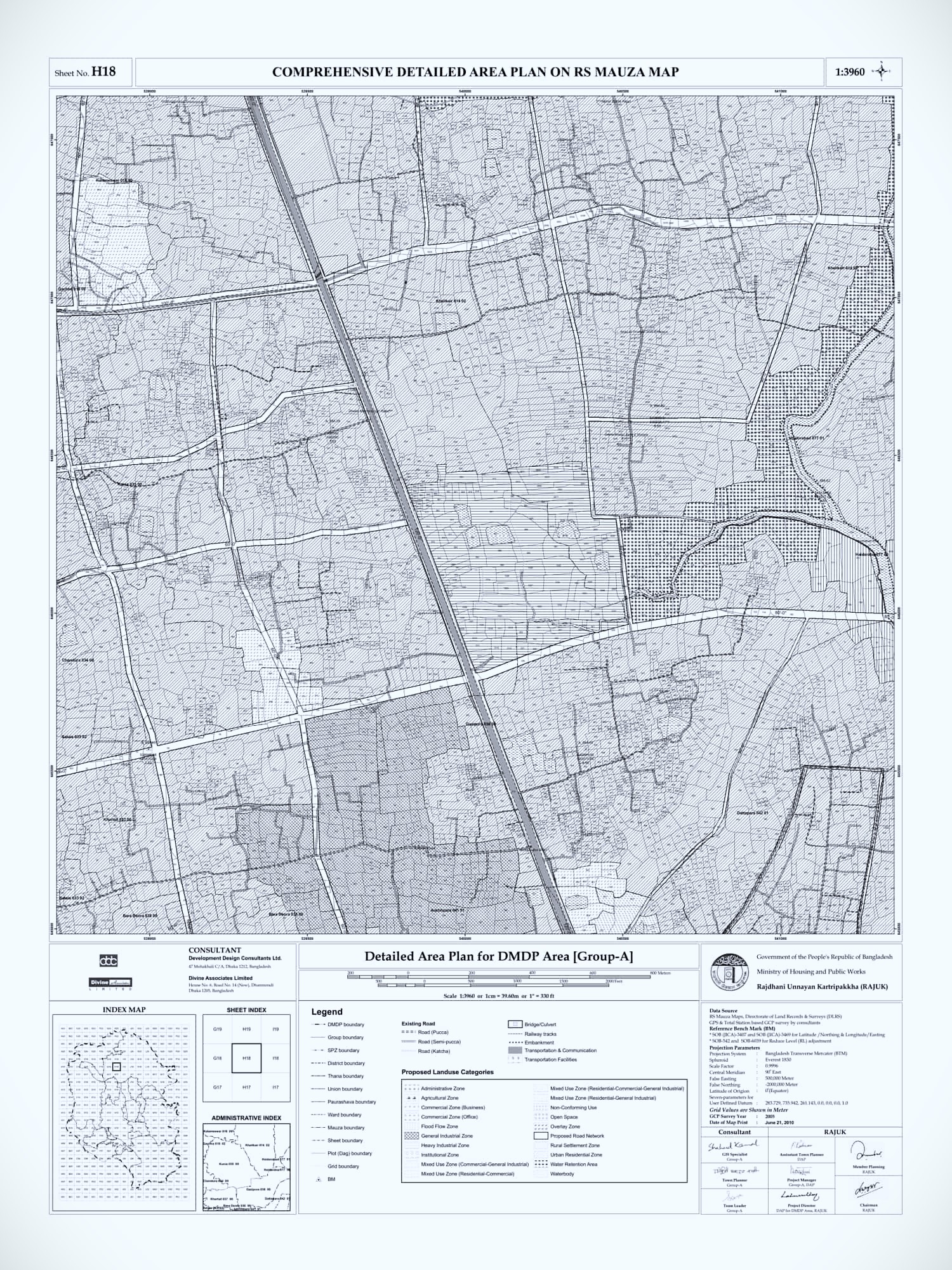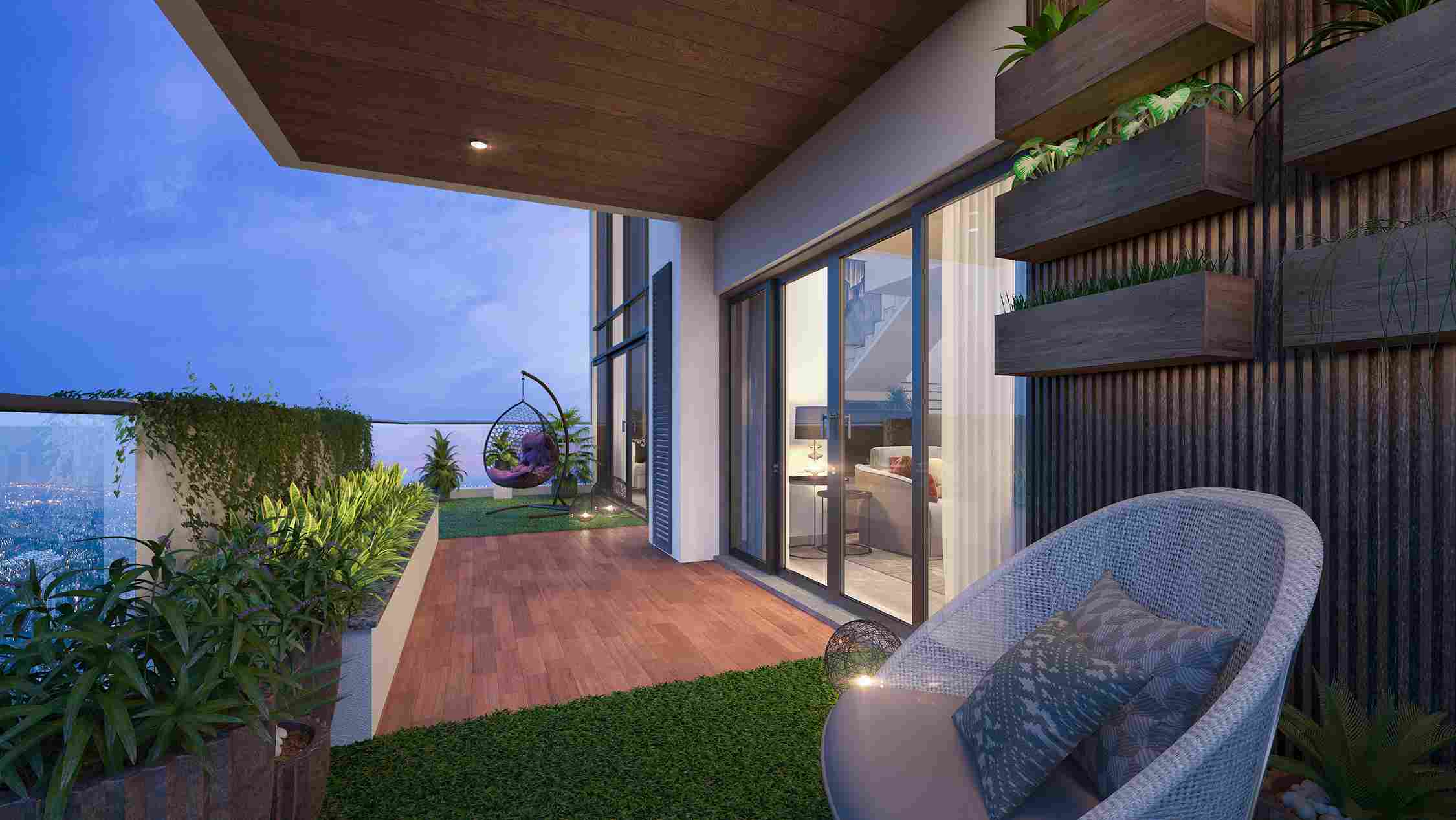Detailed Area Plan (DAP): Redefining Dhaka’s Landscape

One of the world's most densely inhabited cities, Dhaka is host to nearly 23 million people. The centralizing impact of Dhaka City has accelerated urbanization, rapid growth, and poor infrastructure, posing several problems for the inhabitants, including congested roads, unhealthy air quality, and an absence of affordable housing.
By worsening the city's environmental circumstances, it has also reduced the quality of life.
 A Detailed Area Plan (DAP) often includes in-depth maps, zoning rules, and land development regulations that are particular to their assigned area. In fact, it is sometimes seen as the whole city's strategic plan, outlining how the city should expand with good planning while encouraging livability and conservation.
By utilizing its advantages, cities all over the world are speeding up their expansion while maintaining it in line with the city's more general goals and vision ultimately leading to a town that is better planned and has a higher quality of life.
A Detailed Area Plan (DAP) often includes in-depth maps, zoning rules, and land development regulations that are particular to their assigned area. In fact, it is sometimes seen as the whole city's strategic plan, outlining how the city should expand with good planning while encouraging livability and conservation.
By utilizing its advantages, cities all over the world are speeding up their expansion while maintaining it in line with the city's more general goals and vision ultimately leading to a town that is better planned and has a higher quality of life.
The blueprint gives a closer look at the DAP Map in Dhaka
On July 6, 2022, Prime Minister Sheikh Hasina gave her final approval to the Detailed Area Plan (DAP) that RAJUK had suggested and prepared in December 2021. To transform Dhaka into a livable and cutting-edge megacity by the year 2035, the 20-year master plan was adopted. However, realtors remain opposed to the new plan, saying it may cause more damage than good. Since Dhaka is considered the world's most densely populated city, there are no surprises there – moreover, the city has a reputation for being the second-unhealthiest city to live in. The capital's centralized nature contributes to the already poor state of the environment. RAJUK developed the Dap Map of Dhaka City to enhance the conditions mentioned and guarantee a better life. In this piece, we will go over every aspect of DAP in detail.Let’s define a Detailed Area Plan (DAP) Map of Dhaka City
 A Detailed Area Plan (DAP) often includes in-depth maps, zoning rules, and land development regulations that are particular to their assigned area. In fact, it is sometimes seen as the whole city's strategic plan, outlining how the city should expand with good planning while encouraging livability and conservation.
By utilizing its advantages, cities all over the world are speeding up their expansion while maintaining it in line with the city's more general goals and vision ultimately leading to a town that is better planned and has a higher quality of life.
A Detailed Area Plan (DAP) often includes in-depth maps, zoning rules, and land development regulations that are particular to their assigned area. In fact, it is sometimes seen as the whole city's strategic plan, outlining how the city should expand with good planning while encouraging livability and conservation.
By utilizing its advantages, cities all over the world are speeding up their expansion while maintaining it in line with the city's more general goals and vision ultimately leading to a town that is better planned and has a higher quality of life.
What is the significance of DAP & how will it serve the purpose of the city’s betterment?
DAP mapping is the structural planning for the affected development in the designated region. The majority of the industrial sectors are located close to Dhaka. Already, it has made Dhaka city uninhabitable and because of this, decentralization is essential for our capital. Thus, a thorough area plan is crucial in reducing the economic reliance on downtown Dhaka. On the flip side, Dhaka is experiencing a growing number of neighborhoods that promote a healthy lifestyle, and there is a trend towards the construction of gated communities that can enhance your quality of life in this bustling city. For instance, consider the development of the gated community of Rupayan City Uttara. This plan covers urbanization by taking into account public facilities, basic rights, and other financial aid for peaceful and environmentally friendly living. For decentralizing Dhaka city, RAJUK designs the DAP map. The DAP process aims to foster an environment balanced for economic growth across the development regions. It is developed to enhance and secure certain areas by installing prepared drainage systems and flood flow prevention. It systematically plans the area's development, taking into account street design, outdoor spaces, community amenities, transit, and a variety of other factors, such as access roads and business districts. The urban expansion resulting from the DAP will benefit from the provision of service centers.Let’s look at the proposed changes
This updated DAP map includes the city of Dhaka and the surrounding regions and includes an area of around 1,528 square kilometers. This map suggests the creation of new residential areas as well as better land development or enlargement plans for already existing regions. The strategy has been modified to take into account the city's expanding population as well as environmental sustainability. As well as to improve the creation of transport networks to reduce the traffic jams in Dhaka City. However, there will always be new obstacles to overcome when the DAP is put into practice. It can modify the city's urban landscape and make its inhabitants more comfortable.What benefits will the locals of Dhaka get from DAP?
Cities like Dhaka, which have grown increasingly crowded and urbanized through time as a result of economic expansion, can benefit from urban decentralization in several ways. The resources and infrastructure of the city are under too much stress as a result of this development. Dhaka can reduce stress and achieve more evenly distributed development across the nation by decentralizing urban development. In the end, it could decrease travel congestion and enhance regional availability of resources and services. Urban decentralization's ability to decrease traffic congestion is one of its main advantages. New employment prospects and possibilities for everyone will be created through economic development in neighboring regions. Decentralization in cities will also result in better air quality. A higher standard of life results from having more green places.Are there any challenges & drawbacks of DAP?
The DAP is exceptionally developed, however, several issues need to be fixed. DAP concentrates mainly on the physical development of Dhaka but neglects to focus on the socio-economic aspects of its urban growth. It leaves out the impact it will have on the city's poor residents, who essentially make up a substantial section of the population. The following are some difficulties and restrictions with properly carrying out DAP for the goal of urban decentralization in Dhaka:- The impact of government officials on the plans and the transfer of authority and assets to local authorities could make it difficult to carry out DAP. The local authorities, however, lack the expertise and capacity to manage obligations. Additionally, there might be hidden corruption as well, which would damage the entire purpose of DAP.
- It may lead to an insufficient number of effective local government institutions in Dhaka, which is crucial for decentralization, due to weak institutional frameworks, insufficient employees, and a lack of technical experience. Additionally, they won't be able to adequately meet the demands of the community because it will restrict their ability to provide the necessary services.
- Authorities from local governments might not have the necessary knowledge to utilize financial resources well. It may result in financial mismanagement and corrupt management.
- DAP may cause resistance from society's citizens who are opposed to changing their comfortable way of life with innovative development initiatives. Residents may become upset as a result and the implementation may face opposition.
- The landowners will be restricted to a set number of units per plot.
- DAP regulations limit the amount of land that is usable by 20 to 40 percent, which lowers the overall amount of money that landowners receive.
- Due to DAP seldom allowing real estate developers to work on certain sites, the share of lands is now reduced.
- Potential tenants will be discouraged from moving to DAP-covered regions as a result of the rising rent.

